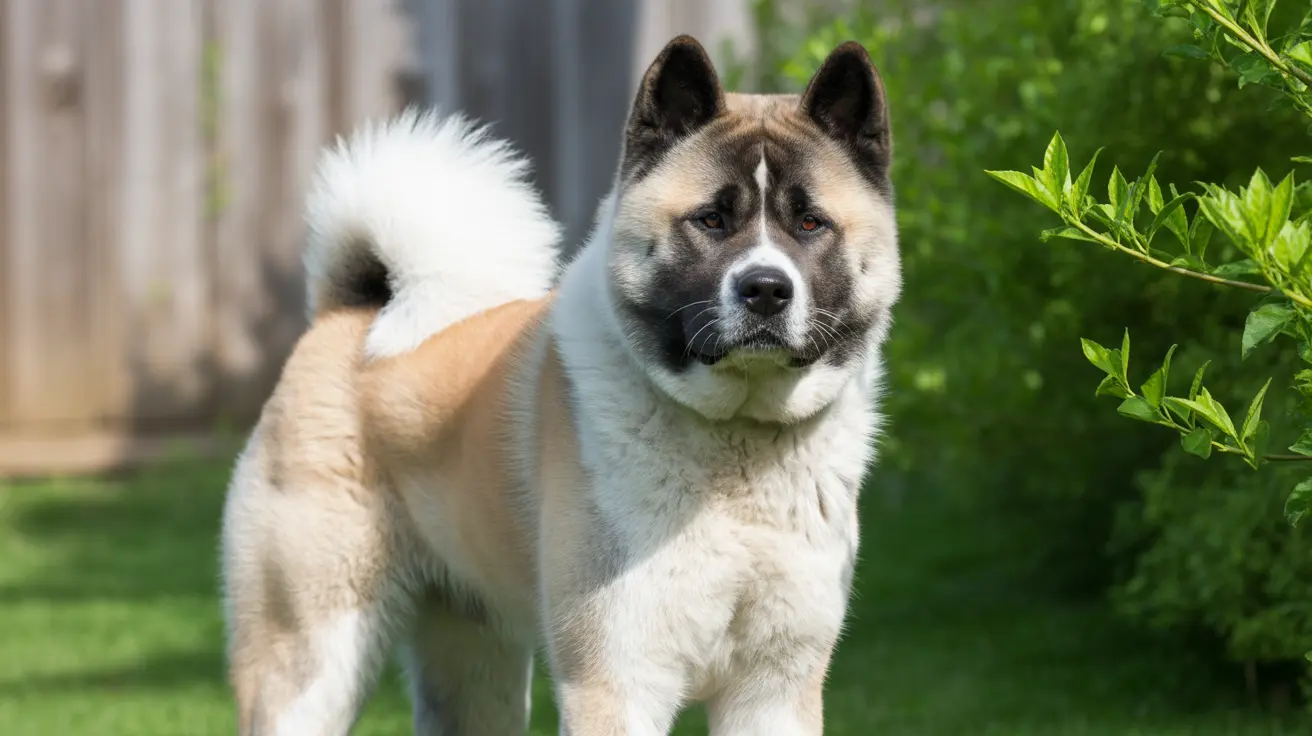Understanding the key differences between American Akita and Japanese Akita breeds is crucial for potential owners and dog enthusiasts. While these magnificent dogs share ancient ancestry, they've evolved into distinct breeds with unique characteristics. This comprehensive guide explores their differences in appearance, temperament, and care requirements to help you understand these noble breeds better.
Physical Differences Between American and Japanese Akitas
The most striking distinctions between these breeds are in their physical appearance. American Akitas are notably larger and more bear-like, with males weighing up to 130 pounds and standing 24-28 inches at the shoulder. Japanese Akitas are more refined and fox-like, typically weighing 60-100 pounds with a height of 22-26 inches.
American Akitas feature a broad head, deep-set eyes, and often sport a distinctive black mask. In contrast, Japanese Akitas have a narrower, more angular face without the black mask, and their almond-shaped eyes contribute to their fox-like appearance.
Coat Colors and Markings
Color variations represent one of the most significant differences between these breeds. American Akitas come in a wide range of colors, including black, white, brindle, fawn, and pinto patterns. They can also display various markings and the characteristic black mask.
Japanese Akitas maintain a more restricted color palette, limited to red, fawn, brindle, or pure white. They always feature urajiro (cream or white) markings on their cheeks, chest, and tail. The Japanese breed standard strictly prohibits the black mask common in American Akitas.
Temperament and Personality Traits
While both breeds show unwavering loyalty and intelligence, their temperaments differ subtly. American Akitas, bred primarily as guard dogs, typically display more protective instincts and may be more assertive with strangers. They often exhibit strong dominance traits and require consistent, firm training.
Japanese Akitas tend to be more reserved and sensitive in nature. While equally protective of their families, they generally respond better to gentle, positive reinforcement training methods. Both breeds maintain a strong prey drive and may show same-sex aggression, requiring early socialization and experienced handling.
Health and Care Requirements
Both Akita varieties share similar health considerations, including hip dysplasia, progressive retinal atrophy, and autoimmune conditions. Their thick double coats require regular grooming, especially during shedding seasons. American Akitas may need more intense daily exercise, while Japanese Akitas typically do well with moderate activity levels combined with mental stimulation.
Cultural Significance and Recognition
The Japanese Akita holds a special place in Japanese culture as a national treasure, symbolizing good fortune and loyalty. The famous Hachiko, known for his extraordinary loyalty, was a Japanese Akita. American Akitas, while highly respected, developed their own identity and recognition after World War II, particularly in Western countries.
Frequently Asked Questions
What are the main physical differences between American Akitas and Japanese Akitas?
American Akitas are larger and more bear-like with a broader head and black mask, while Japanese Akitas are smaller, more refined, and fox-like without a black mask. American Akitas have a more robust build overall.
How do the temperaments of American Akitas and Japanese Akitas compare?
American Akitas tend to be more protective and assertive, while Japanese Akitas are typically more reserved and sensitive. Both breeds are loyal but require experienced handling.
Which Akita breed is larger, American Akita or Japanese Akita?
American Akitas are larger, with males weighing up to 130 pounds, while Japanese Akitas typically weigh between 60-100 pounds.
What coat colors and markings distinguish American Akitas from Japanese Akitas?
American Akitas come in various colors including black, white, brindle, and pinto, often with a black mask. Japanese Akitas are limited to red, fawn, brindle, or white, always with urajiro markings.
Are American Akitas or Japanese Akitas better suited for first-time dog owners?
Neither breed is recommended for first-time dog owners due to their size, strength, and independent nature. Both require experienced handlers who understand large, powerful breeds.






